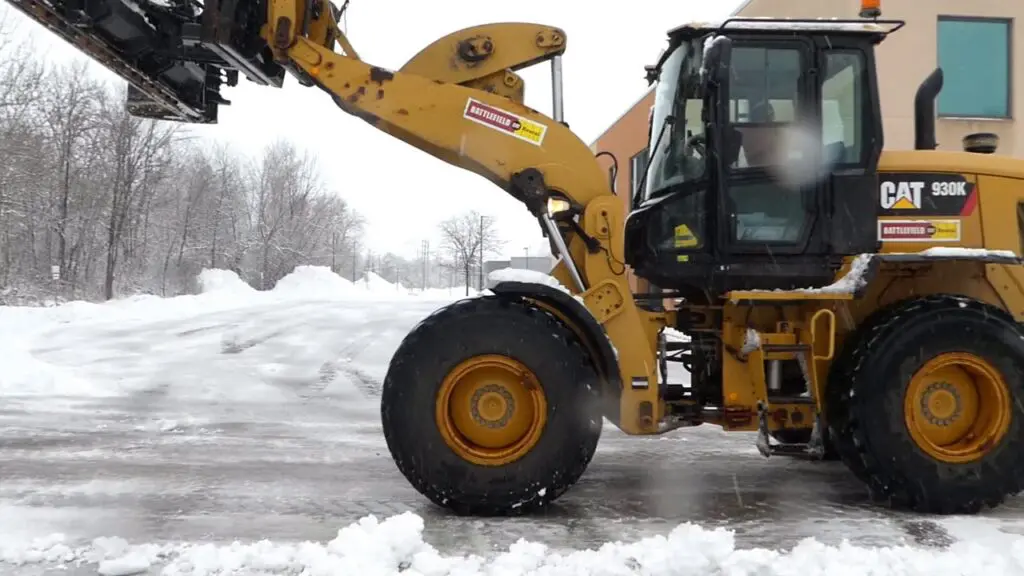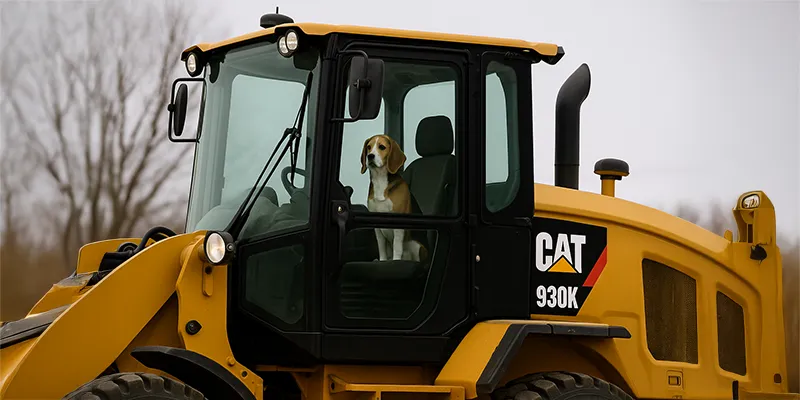Dear reader,
Please have a look at the image below:

No rush. Take your time.
Ready?
Ok. Here is my question:
- Is this thing on wheels an automobile?
If you say “yes”, I appreciate your time and wish you well this summer.
If you say “no”, keep reading.
Is a Wheel Loader an “Automobile”? The LAT Thinks So.
In Carpenter v. Intact, the Licence Appeal Tribunal had to decide whether a pedestrian struck by a Caterpillar 930K wheel loader was involved in an “accident” under the SABS. That turned on whether the CAT 930K was an “automobile” under Part VI of the Insurance Act.
Under the Adams v. Pineland Amusement Ltd. test from the Ontario Court of Appeal, a vehicle is an automobile if:
- It is an “automobile” in ordinary parlance;
- It is defined as an “automobile” in the insurance policy; or
- It falls within an enlarged definition of “automobile” in a relevant statute.
Both parties agreed that the second and third branches didn’t apply. The sole issue was whether the CAT 930K was an automobile in ordinary parlance.
The adjudicator found the CAT 930K was an automobile and said she was bound by Grummett v. Federation (1999). In that case, the Superior Court held a race car was not an automobile because it lacked the typical, objective characteristics of one. As the judge put it:
“In attempting to determine if a vehicle is an automobile in ordinary parlance, it is in my view appropriate to consider the purpose and function of the vehicle… An automobile in his view was ‘a vehicle which was designed for and capable of the transportation of passengers on streets and highways.’ … It is clear, however, that such [race] cars are not designed for ordinary vehicular traffic on highways or city streets.”
In contrast, the adjudicator found that the 930K had “all of the characteristics of an automobile”:
“The Caterpillar had been driving on a public roadway for over 7 km prior to the accident… It was equipped with a driver’s seat, tire clad wheels, steering wheel, braking system, lights, signal lights, speedometer, seatbelt, GPS system, enclosed driver compartment, mirrors, and radio. All of these factors persuade me that the purpose and function of the Caterpillar at the time of the accident was to behave like an automobile.”
She also found it persuasive that the responding officer treated it as a motor vehicle accident and asked for a licence and insurance. In her view, this was further evidence that the public perceives the machine to be an automobile .
But… Is It Really an “Automobile”?
“Ordinary parlance” means using common, everyday language that most people understand. If it walks like a duck and quacks like a duck — sure, maybe it’s a duck. Likewise, if a motor vehicle looks, sounds, fells, smells, and tastes like an automobile, it’s likely an automobile.
I appreciate that the CAT 930K has a driver’s seat, tires, lights, a steering wheel, and a GPS. You know what else has many of those features? Airplanes.
More importantly, the Ontario Court of Appeal has already told us that construction and farming equipment like this is not an automobile in ordinary parlance. In Regele v. Slusarczyk (1997), the Court held a farm tractor isn’t an automobile. In Morton v. Rabito (1998), it found a backhoe wasn’t either. Referring to Regele, the Court stated: “I see no relevant distinction between a farm tractor and a backhoe. If a farm tractor is not an ‘automobile’ within s. 224(1) of the Insurance Act, neither is a backhoe.” By that logic, a wheel loader shouldn’t be one either.
I also question the adjudicator’s reasoning that she was bound by Grummett but not by Regele or Morton (decisions from a higher court). Grummett involved a race car. This case involves a construction vehicle designed for lifting and loading, much like the vehicles in Regele and Morton.
Even taking Grummett at face value, the court there accepted that an automobile is a vehicle “designed for and capable of the transportation of passengers on streets and highways.” A wheel loader doesn’t fit that description. It isn’t designed to transport passengers. It’s designed to move materials — soil, sand, snow, etc. Using it to drive from point A to B on a public road doesn’t transform its fundamental nature.
There is no principled basis in law to treat a wheel loader as an automobile just because it happened to be behaving like one at the time of the accident.
I’ve been advised by Intact’s counsel that the adjudicator’s decision is under appeal. So don’t rush out yet to buy parking passes for your wheel loaders.
See Carpenter v Intact Insurance Company, 2024 CanLII 118795 (ON LAT).


